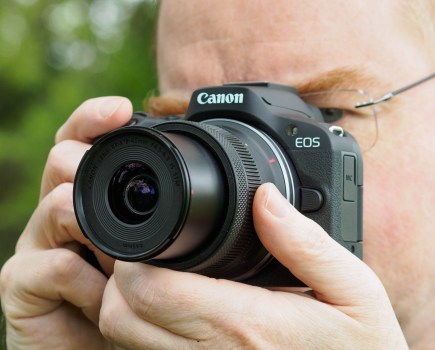It’s that time when AP takes a look back over the previous year to reveal the best cameras. Of course, 2020 has been a very difficult year that has been as challenging for huge companies as for individuals. As a result, fewer new cameras and lenses have appeared than usual.
The year started with the launch of Canon and Nikon’s flagship professional sports DSLRs, the EOS-1D X Mark III and D6, in readiness for the much-anticipated Tokyo Olympics. These formed part of the usual flurry of releases in the run-up to the Japanese photo industry’s big annual trade show CP+ at the end of February. But then the reality of the coronavirus epidemic struck, CP+ was cancelled, and eventually the Olympics was postponed, too.
As factories across Asia shut down and consumer demand slumped, new products were quietly delayed until the outlook started to look more positive in the summer. Since then, we’ve seen a healthy stream of new cameras and lenses, but with manufacturers clearly targeting sectors where they feel they can make a profit, even when selling in lower volumes than usual.
As a result, we’ve mostly seen cameras aimed at the committed hobbyist, along with some that specifically target vloggers making videos for YouTube. Manufacturers also seem to have reached a consensus over what high-end mirrorless cameras should look like.

Canon’s EOS R6 is a remarkable performer
This year has been all about relatively small SLR-shaped bodies with a central viewfinder, fully articulated screen, dual card slots and in-body image stabilisation. We’ve seen some interesting attempts at compact full-frame bodies, too, but Sigma’s fp is too stripped-back for our liking, while Sony’s Alpha 7C suffers from poor handling and a tiny viewfinder.
Full-frame domination
The industry’s headlong charge towards full-frame mirrorless continues apace, to the extent that for the first time in the digital era, more full-frame cameras have been released over the course of 2020 than those with other sensor sizes put together.
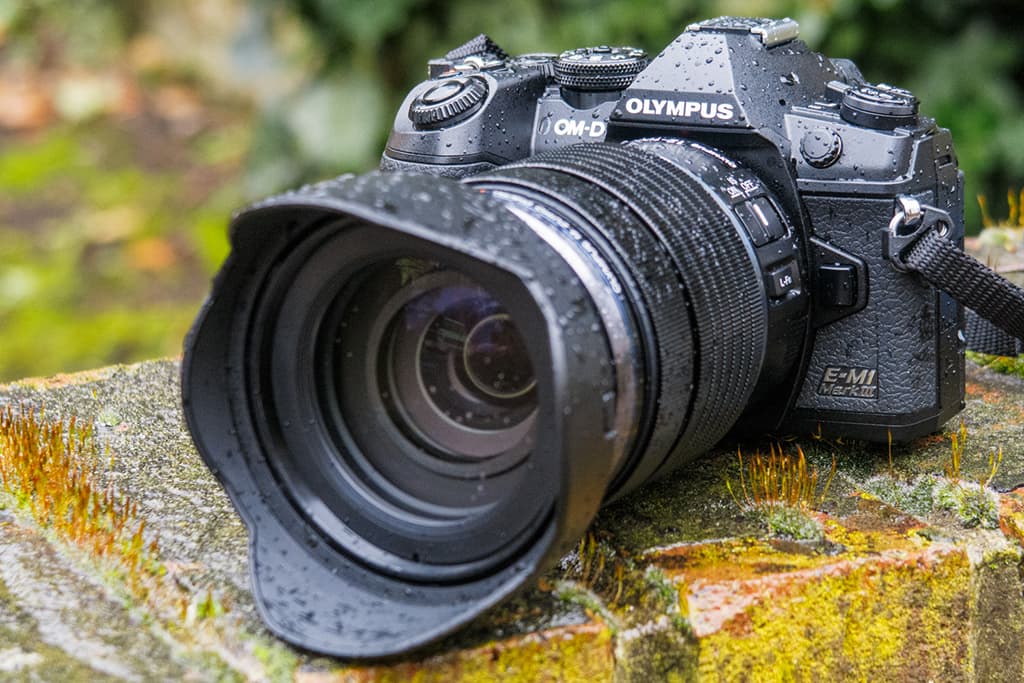
The Olympus E-M1 Mark III is fast and rugged
Likewise, while many fewer lenses have been launched than usual, the vast majority have been for full-frame mirrorless. The flipside of this has been a paucity of interesting cameras in the sub-£1,000 bracket, with the honourable exception of Fujifilm’s attractive new X-S10 that’s designed to lure Canon and Nikon APS-C DSLR users to mirrorless.
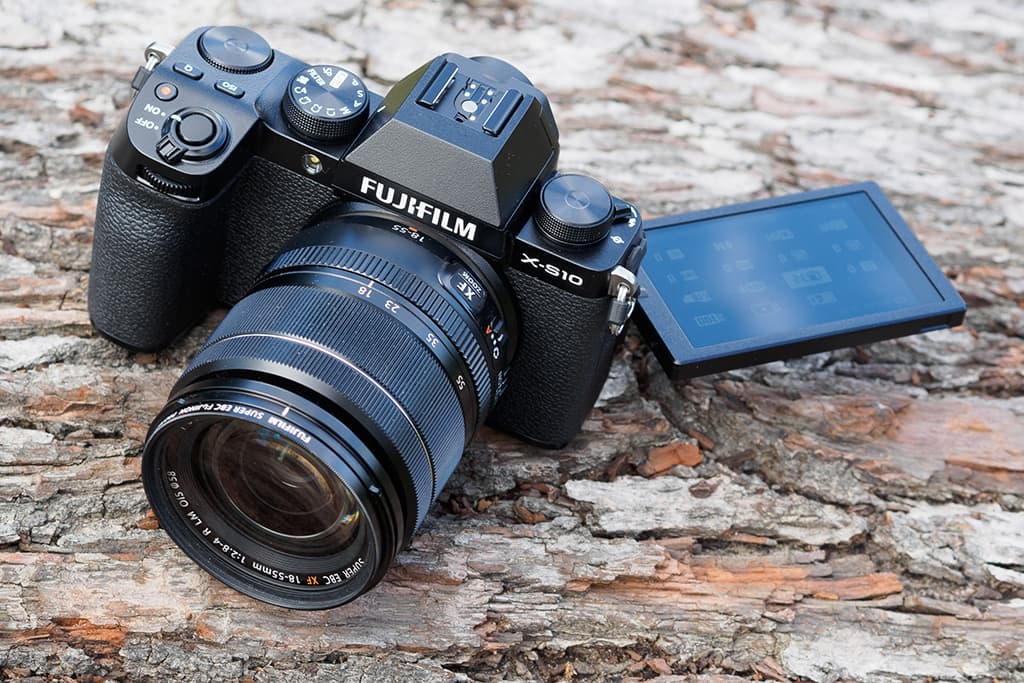
Fujifilm has targeted DSLR users with its X-S10
Whether this is a pointer to an expensive ‘new normal’ for the camera industry remains to be seen. But it seems likely that we’ll see less emphasis on cheap mass-market cameras in the future, and more on high-end enthusiast models.
Read on to discover our favourite cameras of 2020 and come back tomorrow for the best lenses of 2020!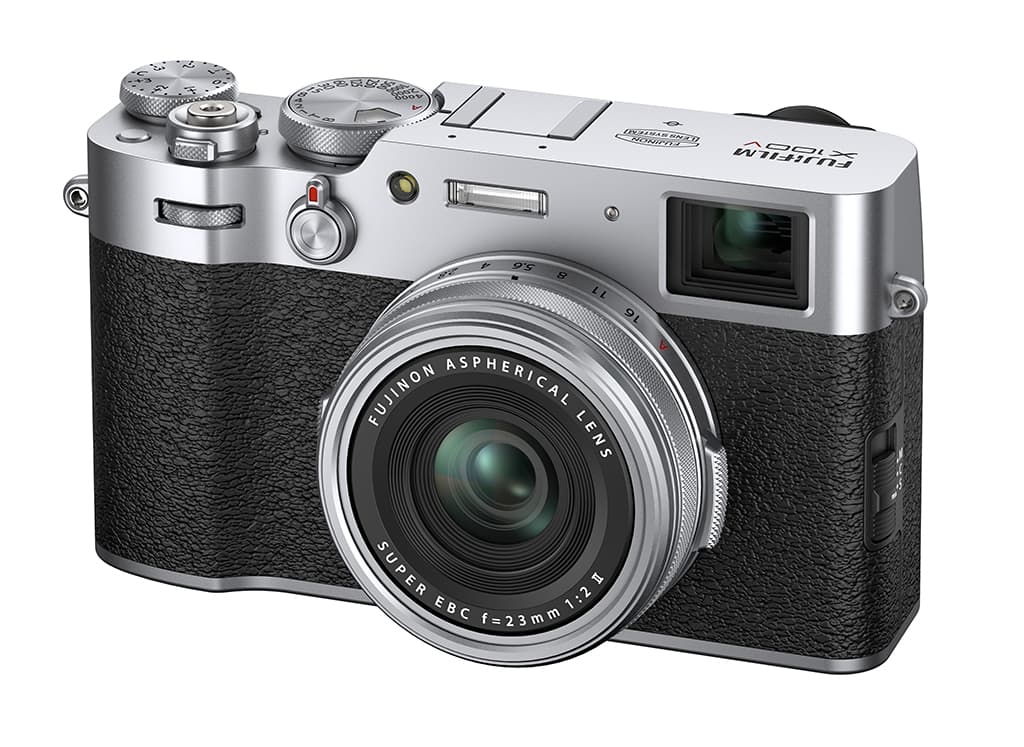
Fujifilm X100V
£1,299
What we like:
Classic, stylish design
Fantastic image quality
Useful tilting screen
It’s now a decade since Fujifilm released its original, groundbreaking X100. By combining a large APS-C sensor with a fixed lens in a classically styled body, the company not only transformed its fortunes and reputation among serious photographers, but also established one of its best-loved camera lines. This year’s fifth-generation X100V maintains everything we love about its predecessors, while adding in some significant and very welcome updates.
Outwardly, the new model looks very much as before. Its design is reminiscent of 35mm rangefinder cameras, with an array of traditional analogue control dials for shutter speed, aperture, ISO and exposure compensation. It also maintains the unique hybrid viewfinder that gives a choice of optical or electronic viewing. But elsewhere it’s all change, with a completely redesigned 23mm f/2 lens that now includes two aspherical elements, providing improved sharpness at large apertures and close distances.
The 26.1MP X-Trans CMOS 4 sensor and X-Processor 4 combine to enable a wider sensitivity range of ISO 160-12,800 (extendable to ISO 80-51,200), along with continuous shooting at up to 11fps with the mechanical shutter, or 20fps with the electronic shutter. On the back, the LCD touchscreen now tilts up and down, which is handy for candid and street photography, while the viewfinder has also been improved. Image quality is excellent, with Fujifilm’s peerless Film Simulation colour modes on hand to give extremely attractive JPEG files. The overall result is a camera that not only looks fantastic, but is also a superb photographic tool.
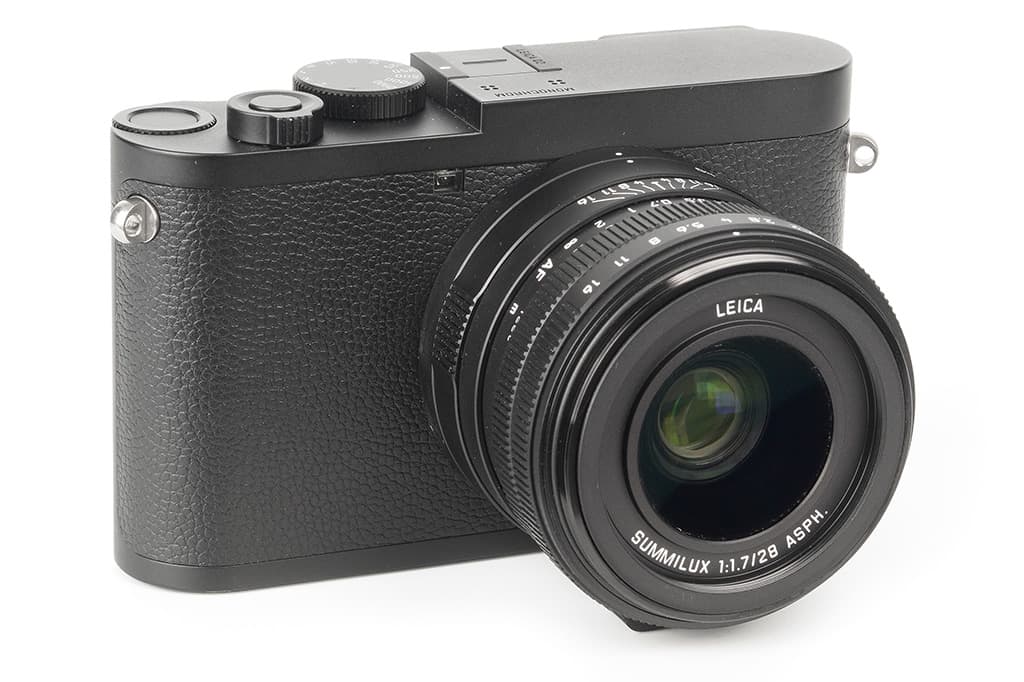
Leica Q2 Monochrom
£4,995
What we like
Superb image quality
Straightforward, intuitive handling
Remarkable low-light capability
Leica’s unique position within the market allows it to deliver concepts that mainstream camera makers simply couldn’t contemplate. The Q2 Monochrom is a case in point, being a full-frame compact camera with a fixed 28mm f/1.7 optically stabilised lens and a 47.3MP sensor that can only produce black & white images. It’s not by any stretch of the imagination something that the vast majority of photographers would ever contemplate buying. But it’s still very special indeed. Based on last year’s Q2, this version does without the colour filter array over the pixels that conventional sensors use to construct colour images.
As a result, it gains the ability to shoot at sensitivities of ISO 100-100,000, along with increased dynamic range and improved high-ISO noise characteristics. This means that it’s capable of producing really stunning image files. Throw in a very capable autofocus system, continuous shooting at up to 20fps and 4K video recording, and you have a camera whose imaging abilities belie its deliberately understated looks. The Q2 Monochrom is also a delight to work with, thanks to its traditional analogue dials and excellent electronic viewfinder.
Leica has perfected the art of stripping a camera back to its essentials, meaning that you get exactly those controls you really need for shooting, without being distracted by fripperies. The robust, weather-sealed body has a discreet matt-black finish, making it an unobtrusive choice for street shooters. It’s a really fine camera, and a serious object of desire for lovers of black & white photography.

Canon EOS R5
£4,199 body only
What we like
High resolution and blistering speed
Unprecedented video specification
Stunning viewfinder
It’s fair to say that Canon’s initial efforts at full-frame mirrorless weren’t entirely successful, with the original EOS R and EOS RP discarding too much of the firm’s established DSLR design philosophy in the search for new features and user interface ideas. Thankfully, this year’s second-generation models are a very different proposition. Just a glance at the EOS R5’s headline specifications tells the story.
It employs a 45MP full-frame sensor that provides a sensitivity range of ISO 100-51,200, with Dual Pixel CMOS technology enabling phase-detection autofocus across the entire image area with 5,940 selectable focus points. It can shoot in full resolution at 12fps using its mechanical shutter, or a staggering 20fps with its silent electronic shutter.
Built-in 5-axis image stabilisation claims up to 8 stops of effectiveness with selected RF lenses. On the video front, it’s especially impressive, being the first mirrorless camera to be capable of recording 8K raw video internally. However, well-documented overheating issues limit its usefulness. In terms of design, you get everything you’d expect from a pro-spec Canon flagship,
with superb handling and a comprehensive complement of physical controls that are joined by a responsive touchscreen interface.
The electronic viewfinder is sensational, with 5.76m-dot resolution, 0.76x magnification and a fast 120fps refresh rate. It’s joined by a 3.2in, 2.1m-dot fully articulated screen that’s handy for shooting at high or low angles. Altogether, this adds up to a sensational, if pricey, camera for stills photographers.
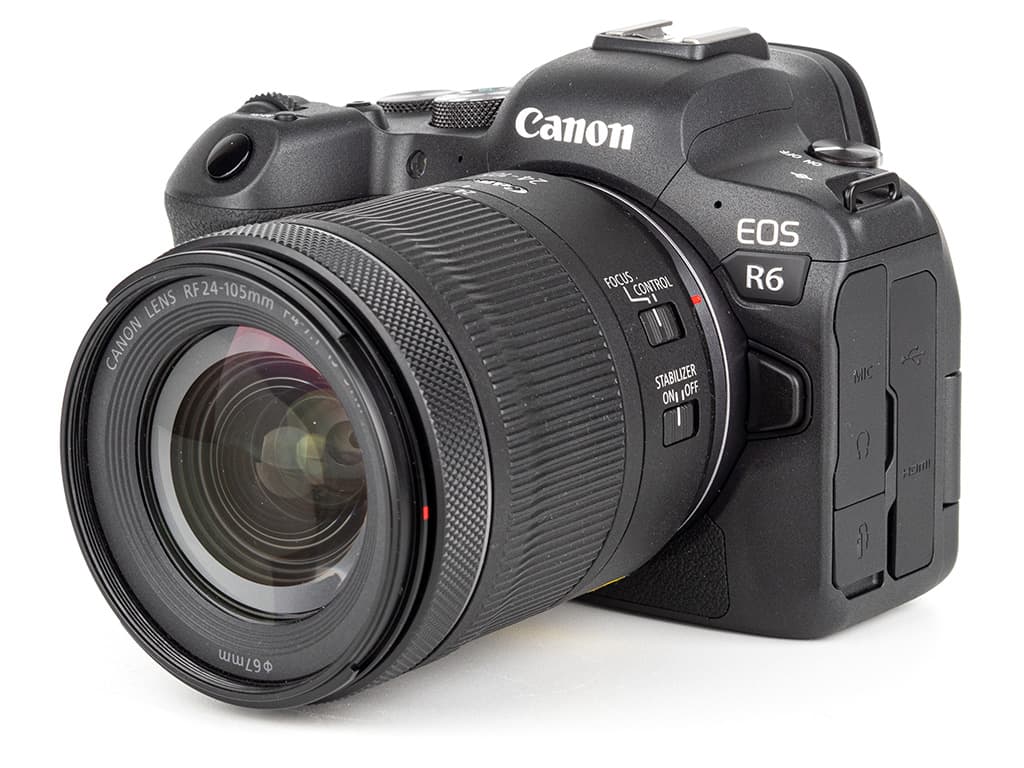
Canon EOS R6
£2,499 body only
What we like
Superb design and handling
Excellent autofocus
Works well with EF lenses
For all of the EOS R5’s attention-grabbing headline specs, its less expensive sibling is the camera that serious enthusiasts are more likely to contemplate buying. They’re unlikely to be disappointed, either, because this is a ridiculously talented all-rounder that affords most of the same benefits, just with a 20MP sensor borrowed from the flagship EOS-1D X Mark III and ‘only’ 4K video.
It also works really well with EF-mount DSLR lenses via Canon’s Mount Adapter EF-EOS, making it a tempting option for existing EOS DSLR shooters who’d like to upgrade to mirrorless. Like its sibling, on paper the EOS R6 comprehensively surpasses its DSLR equivalents in almost every respect. Its drool-worthy spec sheet includes a sensitivity range of ISO 100-102,400, expandable to ISO 50-204,800; continuous shooting at 12fps, or 20fps with the electronic shutter; phase-detection autofocus with 6,072 selectable points arranged across the entire frame; and
4K video recording at 60fps.
The camera also boasts 5-axis in-body image stabilisation and dual high-speed UHS-II SD card slots. The viewfinder and screen aren’t quite as spectacular, but the 3.69m-dot EVF and 3in, 1.6m-dot fully articulated touchscreen still surpass most of its closest competitors. The EOS R6 also melds together Canon’s tried-and-trusted DSLR control layout with the best new ideas from the EOS R. It’s covered in physical controls, including three electronic dials and a focus-area joystick. It also boasts Canon’s truly remarkable subject detection and tracking AF. Quite simply, it’s one of the best cameras we’ve ever tested.
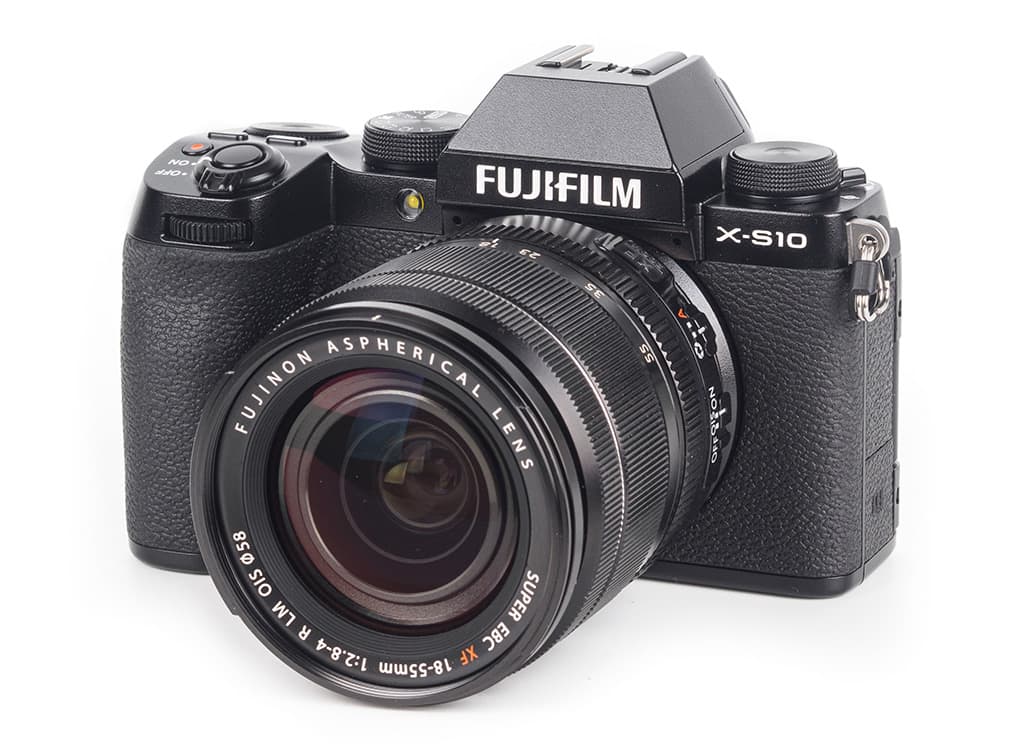
Fujifilm X-S10
£949 body only
What we like
Compact, SLR-like design
In-body image stabilisation
Lovely Fujifilm colour output
Fujifilm’s latest camera marks a startling new direction for the company. For the past decade, most of its cameras have had a very retro flavour, with analogue control dials and small handgrips. However, the X-S10 is rather different, and instead looks like a shrunken version of a conventional DSLR. The firm says it’s supposed to appeal to users of Canon and Nikon DSLRs who are frustrated by the two firms’ inability to produce a convincing APS-C mirrorless offering, and it achieves this aim supremely well.
Sitting between the X-T30 and X-T3 in Fujifilm’s range, the X-S10 presents a very enticing package. It uses the same proven 26.2MP APS-C X-Trans CMOS sensor and X-Processor 4 as its siblings, which bodes well for its performance and image quality. But it also includes 5-axis in-body image stabilisation and a fully articulated touchscreen. Its large handgrip makes it really comfortable to hold, particularly with larger lenses such as telephoto zooms, while two electronic control dials under your finger and thumb combine with a focus-area joystick to provide an excellent, very DSLR-like shooting experience.
A third dial on the camera’s shoulder cycles through Fujifilm’s excellent film simulation modes, but is one of several controls that can be reconfigured if you prefer. As yet, we haven’t had enough time with the X-S10 to complete a full review. However, we’ve spent long enough with it to be rather smitten by its charms. It’ll surely appeal very strongly to DSLR photographers who’d like to downsize to mirrorless, but don’t want the size or expense of full-frame.

Fujifilm X-T4
£1,549 body only
What we like
Rapid continuous shooting
Excellent face detection AF
Strong battery life
Few cameras have been as eagerly awaited as Fujifilm’s X-T4, with the addition of 5-axis in-body image stabilisation (IBIS)promising to elevate the firm’s highly regarded APS-C flagship
to new heights. Add a fully articulated screen, uprated AF algorithms, bigger battery, faster continuous shooting and a new mechanical shutter into the mix, and the result is a significant upgrade over the previous X-T3, which was already one of the finest cameras around.
Impressively, Fujifilm has managed to add IBIS without much increase in size, meaning that the X-T4 maintains very true to the design spirit of previous X-T models. It employs much the same array of top-plate dials and switches that provide intuitive at-a-glance control over the camera’s main settings. The magnesium-alloy body is fully weather-sealed and rated for temperatures as low as -10 °C.
Key specifications include a 26.1MP X-Trans CMOS 4 sensor that offers an extended sensitivity range of ISO 80-51,200, with 117 or 425-point autofocus via on-chip phase detection. Continuous shooting is particularly impressive: 15fps with the mechanical shutter, or as fast as 30fps with the electronic shutter and a 1.25x crop. Videographers have access to 4K 60p shooting, files are recorded to dual SD cards, and a new NP-W235 battery promises 600 shots per charge. All things considered, the Fujifilm X-T4 is a fabulous mirrorless camera that would make a great choice for keen enthusiasts who’d like to build a smaller, lighter system. We’d go as far as saying it’s the finest APS-C camera ever made.

Nikon D780
£2019 body only
What we like
Superb build and handling
Excellent live view performance
Immense battery life
It may seem as though the enthusiast-focused DSLR is a dying breed, but that didn’t stop Nikon from releasing this extremely impressive all-rounder at the start of 2020. By taking the essence of the popular D750 and adding in plenty of technology from the mirrorless Z 6, the firm produced a camera that can, in many respects, be seen as combining the best of both worlds.
Built around the same 24MP backside-illuminated full-frame sensor as its mirrorless sibling, the D780 offers an impressive specification. It provides a standard sensitivity range of ISO 100-51,200 that’s extendable to ISO 50-204,800. Its large, bright optical viewfinder is joined by a tilting LCD for live view shooting, with a comprehensive touchscreen interface that perfectly complements the camera’s extensive external controls.
When using the optical viewfinder, it employs a 51-point AF system and is capable of shooting at 7 frames per second, while in live view a 272-point hybrid AF system covers 81% of the frame, and the speed increases to 12fps. Typically for a Nikon DSLR at this level, the D780 is built like a tank, and fully capable of withstanding wet and freezing conditions without missing a beat. One serious advantage over mirrorless competitors is its massive battery life, which is rated to over 2,000 shots per charge when using the optical viewfinder.
Image quality from the full-frame sensor is, naturally, superb. Ultimately this is a sensational camera that’s built to a professional standard and is a sheer delight to use.
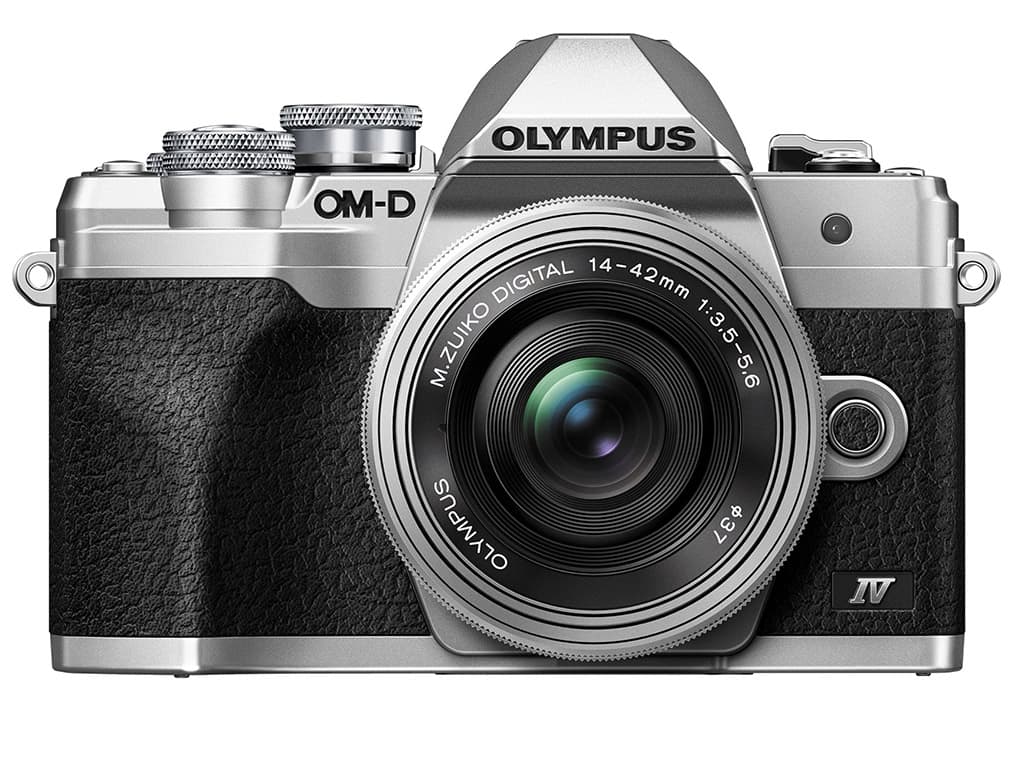
Olympus OM-D E-M10 Mark IV
£799 with 14-42mm lens
What we like
Attractive retro design
Excellent JPEG image quality
Good set of advanced features
On the face of it, Olympus’s entry-level OM-D E-M10 Mark IV looks like a minor update over the Mark III from 2017. It gains a 20MP sensor, a screen that can flip down to face forwards beneath the body for selfies, and Bluetooth for enhanced smartphone connectivity.
But otherwise it shares a similar feature set to its 16MP predecessor, along with a near-identical design. Because of this, it also inherits all the same charms. The body is compact and lightweight, yet fits very nicely in your hand, aided by an improved, reprofiled handgrip. It sports a good array of controls, including twin electronic dials for changing exposure settings, which are complemented by an attractive touch interface.
Most importantly, it delivers consistently good results straight out of the camera, thanks to well-judged auto white balance and Olympus’s attractive colour rendition. Effective in-body stabilisation combats camera shake to keep images sharp. In terms of specifications, the sensor provides ISO 200-6400 as standard, extendable to ISO 80-25,600.
The AF system employs 121 contrast-detection points spread across almost the entire frame; this now looks somewhat dated given that most of its competitors include phase-detection AF, but still works well as long as you’re not shooting fast, erratically moving subjects. As a result, the E-M10 Mark IV adds up to rather more than the sum of its parts.
It’s a lovely little camera that’s a joy to use and delivers great pictures, making it one of our top picks for budding photographers looking for their first ‘serious’ camera.
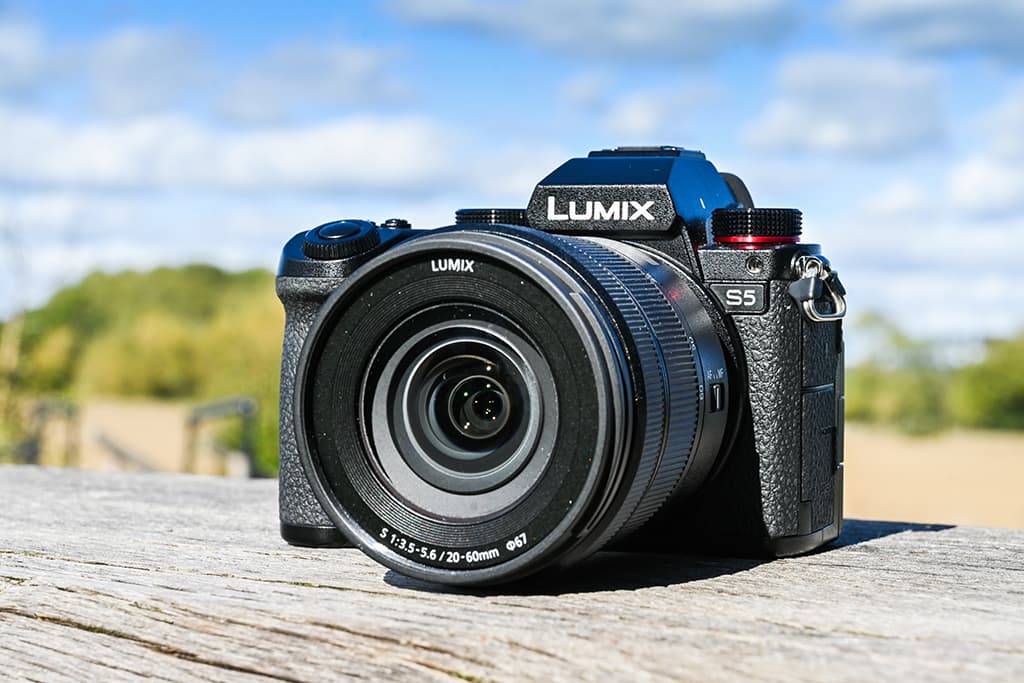
Panasonic Lumix S5
£1,799
What we like
Relatively compact and lightweight
Excellent ergonomics
Impressive video capability
With its initial round of full-frame mirrorless models, the S1, S1R and S1H, Panasonic made a set of extremely capable cameras. However, they were too large, heavy and expensive to gain much mass-market traction. Now with the S5, it’s responded with a smaller and more affordable body that has a lot to offer enthusiast photographers, and especially those who also shoot a lot of video.
Indeed, the S5 ticks almost all of the boxes for an enthusiast-focused full-frame model. Its SLR-shaped body is covered in buttons, dials and switches, with a prominent handgrip, large electronic viewfinder and fully articulated touchscreen that can be set to almost any angle. It boasts dual SD card slots, along with 5-axis in-body image stabilisation that works
in cooperation with optically-stabilised lenses to give up to 6.5 stops of shake reduction.
It’s an extremely capable 4K video camera, too. Its core photographic spec is very competitive, with a 24MP sensor that provides a standard range of ISO 100-51,200. It’s capable of shooting at 7fps with focus fixed, or 5fps with C-AF, and boasts a silent electronic shutter option. A high-resolution multi-shot mode combines eight exposures to give a 96MP image file. Autofocus is handled by Panasonic’s Depth from Defocus technology, which has been updated on the S5 to be more competitive with phase detection AF systems. The 20-60mm kit zoom is also a point in the S5’s favour, with its unusually wide view providing a boon for photographers and vloggers alike. All told, the S5 is a fine camera that’s a strong alternative to other sub-£2,000 bodies.
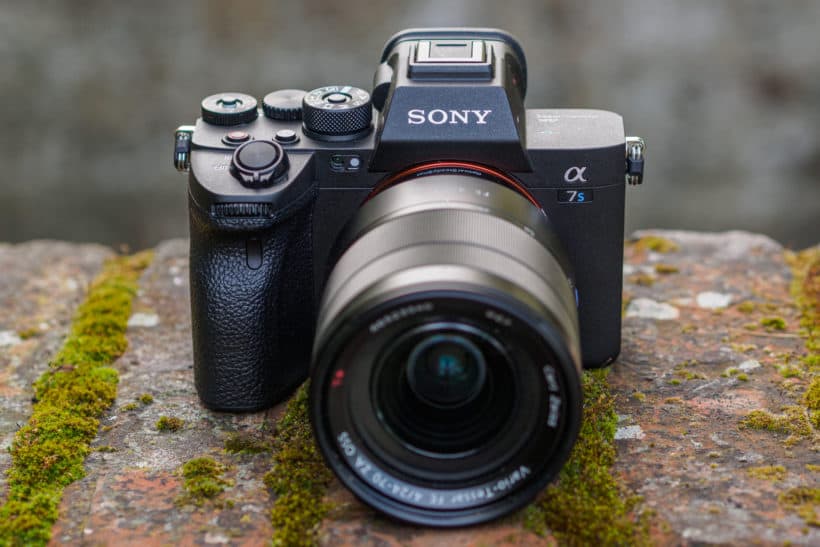
Sony Alpha 7S III
£3799
What we like
Extraordinary viewfinder
Excellent handling
Improved touch interface
Sony has had a relatively quiet year, having released just three new cameras, none of which are wholeheartedly aimed at enthusiast photographers. Its ZV-1 ‘vlog camera’ is designed for YouTubers, while its compact full-frame Alpha 7C is primarily targeted at first-time camera buyers. The Alpha 7S III is more a 4K video production tool, but it’s by far the best of the three, and in terms of design and handling gets everything right that the A7C gets horribly wrong.
Indeed the firm has made some really significant updates to the Alpha 7 design. First is the stunning new 9.44m-dot electronic viewfinder with its huge 0.9x magnification, which is by far the largest view you’ll get on any current full-frame camera. Sony has also added a fully articulated screen, in contrast to the tilt-only LCD that it used on its previous mirrorless cameras. While this is often seen as a video feature, it also allows portrait-format images to be easily composed at high or low angles.
What’s more, the A7S III gains a redesigned, more logical menu system, along with a vastly more comprehensive touch interface that’s finally competitive with the best of its peers. With its 12MP sensor, the A7S III is unlikely to appeal to many photographers, despite the remarkable high-ISO shooting capabilities that come with its relatively low pixel count. But it looks like a pointer for good things to come within the photography-focused Alpha 7 line, with an update to the popular A7 III surely next on Sony’s to-do list.
Additional reading
What are the best DSLRs you can buy





